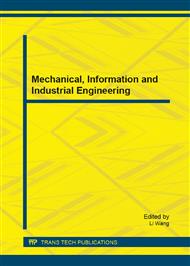p.881
p.885
p.889
p.895
p.900
p.904
p.908
p.912
p.918
Urban Transport GSPN Model of Cyber-Physical Systems
Abstract:
Urban transport is an important part of urban activities, and it is not just a public works technical problems or traffic problems, but also is a comprehensive social problems. There are some traffic congestion problems exist in the current urban traffic network. By using the theory of generalized stochastic Petri to the study of Cyber-physical Systems (CPS), this paper established an urban transport GSPN (Generalized Stochastic Petri Net) model, which chosen bus priority strategies to improve the utilization of road.
Info:
Periodical:
Pages:
900-903
Citation:
Online since:
March 2015
Authors:
Keywords:
Price:
Сopyright:
© 2015 Trans Tech Publications Ltd. All Rights Reserved
Share:
Citation:


